LIVE LIFE Initiative for Suicide Prevention
Each year, more than 700 000 people end their own life – each death a tragedy, with far-reaching impact on families, friends and communities. Much can be done to prevent suicide at the individual, community and national levels. LIVE LIFE is a WHO initiative to support countries to advance political will, national strategic action, and serve as a catalyst for governments to take evidence-based action to prevent suicide. By implementing LIVE LIFE evidence-based interventions for suicide prevention and underlying cross-cutting pillars, many lives could be saved.
The LIVE LIFE implementation guide, developed as part of this initiative, provides technical guidance for the delivery of four key effective and evidence-based multisectoral interventions and six cross-cutting foundational pillars for suicide prevention.
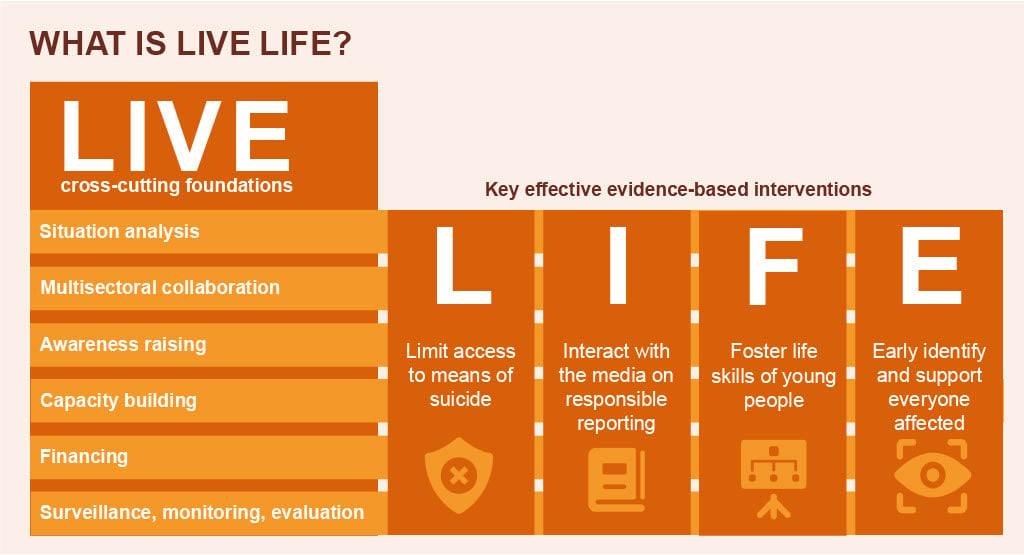
The WHO LIVE LIFE interventions are:
Limiting access to the means of suicide
Interacting with media for responsible reporting of suicide
Fostering socio-emotional life-skills in young people
Early identification and support to everyone affected by suicide and self-harm
The implementation of these interventions is supported by the following cross-cutting pillars:
- situation analysis
- multisectoral collaboration
- awareness raising and advocacy
- capacity building
- financing
- surveillance, monitoring and evaluation
Publications
More than 700 000 people lose their life to suicide every year. The world is not on track to reach the 2030 suicide reduction targets. WHO advocates for...

National suicide prevention strategies are essential for elevating suicide prevention on the political agenda. A national strategy and associated action...
WHO Policy Brief on the health aspects of decriminalization of suicide and suicide attempts
Reducing the global suicide mortality rate by a third by 2030 is a target of both the UN Sustainable Development Goals and the WHO Global Mental Health...

Practice manual for establishing and maintaining surveillance systems for suicide attempts and self-harm
This practice manual aims to provide a tool for countries to use in setting up a public health surveillance system for suicide attempts and self-harm cases...
Preventing suicide: a community engagement toolkit
Communities have an important role to play in suicide prevention. They can provide support to people who are vulnerable and to those who have made an attempt...
Preventing suicide: a resource for media professionals, update 2023
There is evidence that media reports about suicide can enhance or weaken suicide prevention efforts. Widely disseminated stories of death by suicide are...
Country success stories
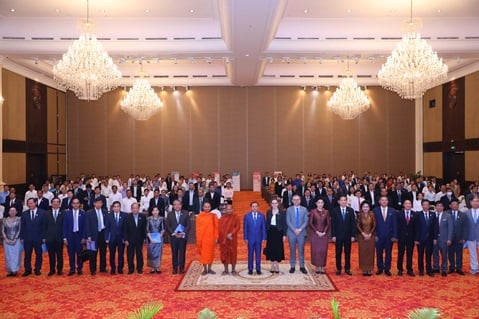
In Cambodia, the Ministry of Health convened more than 230 participants from all 25 provinces and municipalities to conduct a situation analysis and develop the country’s first multisectoral action plan for suicide prevention—one of the largest government-led suicide prevention workshops in the world. The plan has been drafted and is now moving towards implementation. As part of the plan, WHO guidance on the responsible reporting of suicide in the media has been translated and adapted, with a training programme currently in development. In addition, multisectoral collaboration on suicide surveillance is underway, marking the first time that the health sector will work with the national police to share suicide data and take coordinated action.

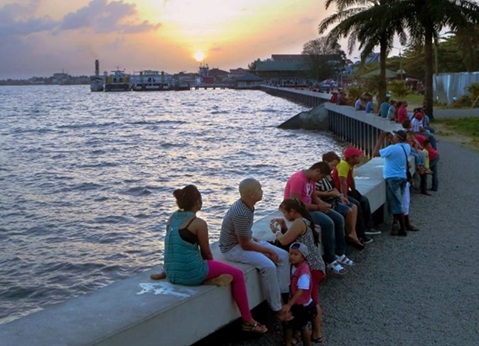
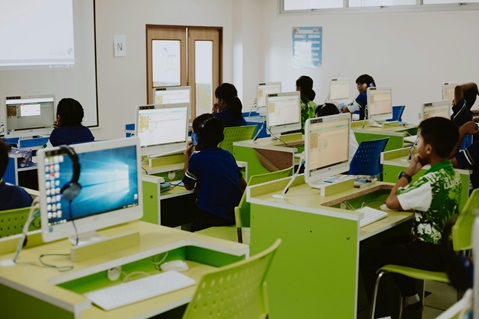
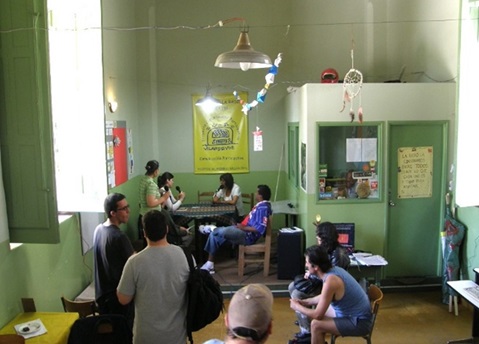
Related health topics
Related initiatives



